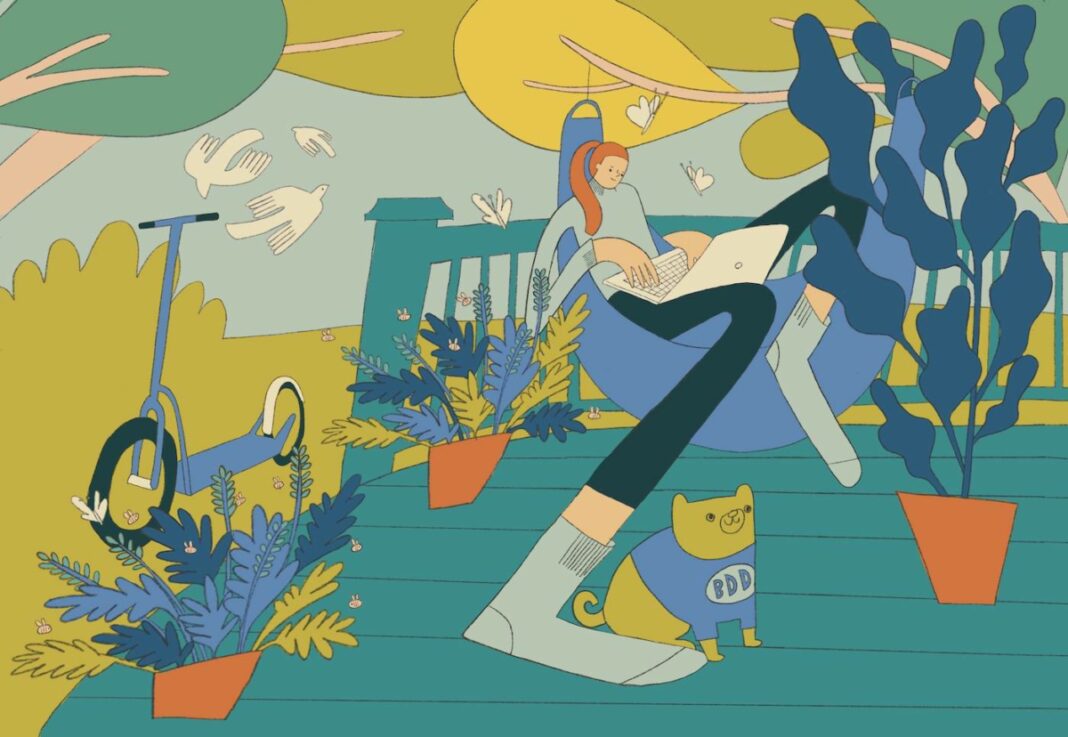Dear Dot,
The other day we were talking about how much oxygen a tree can produce from CO2 and we got to wondering — do trees remove particulate matter from the air too?
–Will, Seattle
Dear Will,
Trees sprout, they tower, they sway, they fall. They are “carbon sinks” and they are “the lungs of the planet.” Forest ecologist Suzanne Simard calls them “social creatures”, and her research has illuminated the remarkable ways in which trees communicate with each other — via an underground fungal network a lot like the neural network of our human brains. They are, in short (and in tall, ha!), remarkable.
Trees, as you note, absorb carbon and release oxygen back into the atmosphere via photosynthesis. I’m sure that somewhere, my high school biology teacher is still chanting 6CO2 + 6H2O → C6H12O6 + 6O2 like a Gregorian monk. (Cheers to you, Mr. S! And to the power of rote memorization.) Though this calculation essentially amounts to some scribbling on the back of a napkin — there are a lot of variables that make this quite a generalization — the US Department of Agriculture suggests that one large tree can provide a day’s supply of oxygen for up to four people.
The Arbor Day Foundation reports that, in one year, a mature tree will absorb more than 48 pounds of carbon dioxide from the atmosphere and release oxygen in exchange.
But trees don’t just stop at giving us oxygen! University of Lancaster geophysics professor and researcher Barbara Maher (“theoretically retired,” she tells me with a laugh while sharing the findings of her latest research with me) has confirmed, alongside colleagues, that trees also help clean air by collecting particulate matter on their leaves. This matter — microscopic pollution spewed by factories and cars and industry — mostly remains on the leaves until a good rain washes it to the ground. There, it soaks into the soil or runs into storm sewers or our waterways. “It’s better to trap it in the soil than to have us breathing it in,” Maher says. While all trees perform this task, Maher’s research is about determining which species are particularly good at it.
“The silver birch does a great job,” she says. But, alas, nothing silver can stay. (Or was that another precious metal?). Birch trees only keep their leaves for maybe half of the year, so Maher has also been looking at evergreen species. Turns out Western red cedar is a pollution-trapping champ! “It did a great job of taking out both the sooty particles and the other, non-sooty solid particles,” she says. But what she and her colleagues also discovered was that the size of the trees played an important role in improving air quality. “As soon as you get really big trees with large canopies,” Maher says, “they can actually make our pollution worse.” How’s that? “They’re going to trap the air [beneath] that canopy and prevent the mixing that would normally happen that would dilute pollution down at road level. So anything bigger than the size of a building is a bad thing.” The sweet spot, she says, is about head height and planted as close as possible to the source of pollution, such as a road. “[Trees] will, by deposition of particles on the leaves, mop up quite a lot of the particle pollution.” And by quite a lot, Maher really does mean quite a lot — roughly a quarter to a half of the particulate matter in her group’s (published, peer-reviewed) study.
Maher’s work looked closely at the impact of planting trees near primary schools and playgrounds on very busy streets. We’re all for bringing tots closer to nature, but we can put trees to work cleaning the air right in our own yards. Her advice? Don’t plant the cedars too close together. Keep them pruned to roughly head height. If you have anyone with an allergy to Western red cedar, it can help to prune them before they flower each year, she says.
And finally, Maher was delighted to learn that the Western Red Cedar, this soot-removing superstar, is called The Tree of Life by Indigenous people. I suspect you’ll be delighted by that too.
Treehuggingly,
Dot


